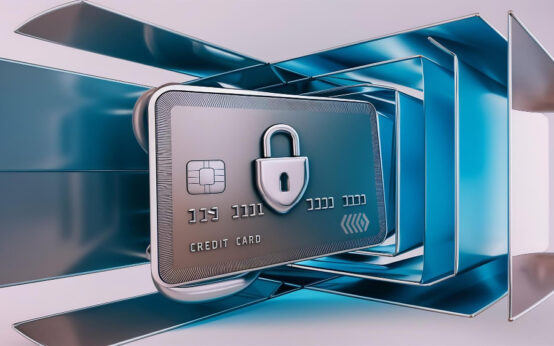
Applying for a credit card can open opportunities for managing your finances more effectively. To apply for credit card that align with your financial goals, understanding eligibility criteria and benefits is crucial.
When you apply for credit card, evaluating terms such as interest rates, rewards, and annual fees becomes essential. This process allows you to make an informed decision, ensuring your chosen card provides maximum value.
1. Check your credit score
Knowing your credit score is the first step to applying for a credit card. Begin by accessing your credit report through trusted sources like Experian, Equifax, or TransUnion. These reports often include your score, which helps determine your eligibility for various credit cards.
Many websites and financial institutions offer free tools to check your credit score. Take advantage of these services to ensure you have the latest information. A good credit score can increase your chances of approval and help you qualify for better terms.
If your score needs to improve, focus on paying down outstanding debt and making timely payments. Monitoring your score regularly helps you track your progress and prepare for your application. That way, you can choose credit cards that align with your financial profile and goals.
2. Research credit card options
Researching credit card options helps you find the best fit for your financial needs. Start by identifying your priorities, such as low interest rates, rewards programs, or no annual fees. This clarity makes the process more efficient and ensures better results.
Use trusted sources like bank websites, comparison tools, or financial blogs to gather information. Look for reviews and ratings to evaluate each card’s reliability and customer satisfaction. These insights help you narrow down your choices effectively.
Pay attention to the terms and conditions of each card. Examine details like introductory offers, late payment fees, and foreign transaction charges. This step ensures you avoid surprises and choose a card that aligns with your financial habits.
With thorough research, you can select a credit card that provides maximum value. Comparing multiple options allows you to make an informed decision and avoid potential drawbacks.
3. Choose the right credit card
Choosing the right credit card requires careful evaluation of your financial needs and spending habits. Start by identifying your goals, such as earning rewards, building credit, or reducing interest costs. These priorities guide your decision effectively.
Compare cards based on key features like APR, annual fees, and rewards programs. Look for cards that match your credit score to increase your chances of approval. Considering these factors ensures you find a suitable option.
Review the benefits offered, such as cashback, travel perks, or balance transfer options. Also, check for potential drawbacks like high fees or restrictive terms. This step helps you make an informed choice.
Select a card that aligns with your financial lifestyle and offers long-term value. A well-chosen credit card not only meets your current needs but also supports your financial growth. Taking the time to research ensures better satisfaction and fewer regrets.
4. Gather necessary documents
Gathering the necessary documents ensures a smooth credit card application process. Start by providing your Social Security number or ITIN, as most issuers require it to verify your identity. This information helps establish your creditworthiness.
Include proof of income, such as pay stubs or tax returns. These documents demonstrate your ability to repay debts, which increases your chances of approval. Accurate details speed up the process and prevent delays.
You also need to provide proof of your address. A utility bill, lease agreement, or bank statement usually works. Make sure all documents are current and clearly show your information.
Having these documents ready saves time and reduces stress during the application process. Organizing them beforehand ensures that you meet the issuer’s requirements. This preparation leads to a smoother application experience and faster results.
5. Complete the application
Completing the application requires attention to detail and accurate information. Begin by filling out personal details, including your name, Social Security number, and contact information. Double-check these entries to avoid errors.
Provide your financial information, such as income and employment status. This step helps issuers evaluate your ability to manage credit responsibly. Ensure all numbers are correct and up to date.
Most applications ask about your housing situation and monthly expenses. Include precise figures, as this impacts your approval odds. Accuracy here ensures a smoother review process.
Before submitting, review the entire application to confirm all details are correct. Look for typos or missing information that could delay your approval. Taking a moment to verify everything helps avoid unnecessary complications.
Submitting a complete and accurate application increases the likelihood of quick approval. This step sets the foundation for obtaining the credit card that meets your needs.
6. Submit the application
Submitting your application is the final step in the credit card process. Before proceeding, ensure all details are accurate and complete. Errors or missing information can cause delays or rejection.
Submit your application through the issuer’s preferred method, such as online, by phone, or in person. Online applications are often faster and provide instant confirmation. Choose the method that suits your preferences.
After submission, keep a record of your application details. Save confirmation emails or reference numbers for tracking purposes. These records help if you need to follow up with the issuer.
Waiting for approval requires patience. Some decisions are instant, while others may take a few days. Stay alert for updates, which may come via email or phone. Taking these steps ensures you remain informed throughout the process.
7. Wait for approval
Once you’ve submitted your credit card application, the next step is to wait for approval. Some issuers provide instant decisions, while others may take a few days to fully review your application. During this time, avoid making changes or applying for multiple cards.
Keep an eye on your email or mailbox for updates on your application status. If you haven’t received any communication after a few days, consider following up with the issuer to check on the progress. Staying proactive helps you stay informed.
Once approved, you’ll receive your credit card in the mail. Be sure to review the terms and conditions carefully before activating it. If your application is denied, don’t be discouraged; consider reviewing the reasons provided and working on improving your credit before reapplying.
8. Review terms and activate the card
Once your credit card is approved, carefully review the terms and conditions provided. Pay attention to key details such as interest rates, fees, and any rewards or benefits associated with the card. Understanding these terms will help you use the card responsibly.
Next, activate your card as soon as you receive it. Most issuers provide easy instructions, often involving a phone call or online activation. This step ensures you can start using your card right away.
Before using the card, take a moment to familiarize yourself with the credit limit and payment due dates. Setting up reminders or automatic payments can help you manage your balance and avoid late fees. Being proactive will keep your credit card experience smooth and beneficial.
9. Start using your card responsibly
Once you start using your credit card, it’s important to do so responsibly. Begin by making purchases within your credit limit to avoid overspending. This helps maintain a healthy balance and prevents high-interest charges.
Next, always make your payments on time. Setting up automatic payments can help you stay on track and avoid late fees. Timely payments also improve your credit score over time, benefiting your financial future.
Monitor your spending regularly to stay aware of your balance. Keeping track ensures that you don’t exceed your budget and helps you manage your finances better. By using your card responsibly, you’ll enjoy the benefits without falling into debt.
Done! When you decide to apply for credit card, it is essential to follow these steps to ensure the application process is smooth and the financial benefits are long-term. Now that you’ve made it this far, here’s everything you need to know about how credit cards work. See you later!



 Best credit cards secured: your path to a stronger credit history <p style='text-transform:none; line-height:20px !important; font-size:16px; font-weight:normal; color:#424242; margin: 0px; margin-top:10px;'>They offer a smart way to show lenders you’re serious about managing your finances.</p>
Best credit cards secured: your path to a stronger credit history <p style='text-transform:none; line-height:20px !important; font-size:16px; font-weight:normal; color:#424242; margin: 0px; margin-top:10px;'>They offer a smart way to show lenders you’re serious about managing your finances.</p>  The best credit cards for lounge access: your key to premium airport comfort <p style='text-transform:none; line-height:20px !important; font-size:16px; font-weight:normal; color:#424242; margin: 0px; margin-top:10px;'>With these cards, you have exclusive access to lounges, offering comfort while you wait for your flight.</p>
The best credit cards for lounge access: your key to premium airport comfort <p style='text-transform:none; line-height:20px !important; font-size:16px; font-weight:normal; color:#424242; margin: 0px; margin-top:10px;'>With these cards, you have exclusive access to lounges, offering comfort while you wait for your flight.</p>  Safe, simple, and fun: discover the best debit cards for kids <p style='text-transform:none; line-height:20px !important; font-size:16px; font-weight:normal; color:#424242; margin: 0px; margin-top:10px;'>These cards offer the flexibility and convenience that both parents and kids need.</p>
Safe, simple, and fun: discover the best debit cards for kids <p style='text-transform:none; line-height:20px !important; font-size:16px; font-weight:normal; color:#424242; margin: 0px; margin-top:10px;'>These cards offer the flexibility and convenience that both parents and kids need.</p>